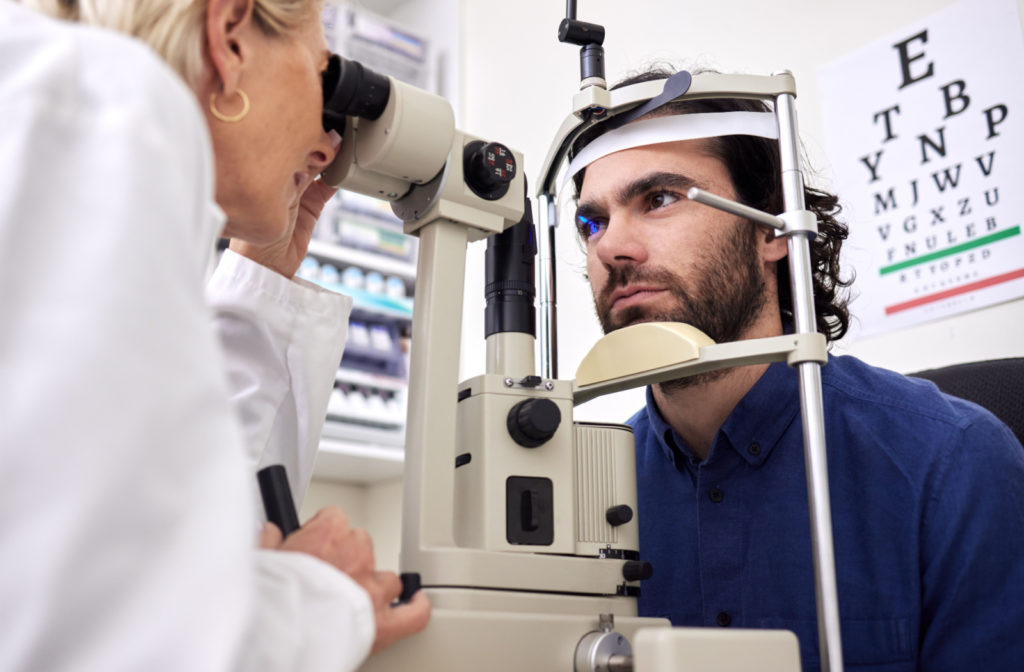Peripheral vision really matters in our day-to-day lives. It’s what helps you drive, play sports, or even just walk around without bumping into things. But, it’s a bummer when we start having troubles with it. It can not only be a nuisance, but downright risky.
It turns out there are a few different things that can cause peripheral vision issues. Inflammation, glaucoma, macular degeneration, medications, and trauma are all potential reasons for peripheral damage.
A few other conditions that can lead to peripheral vision issues include retinitis pigmentosa, diabetic retinopathy, migraines, and strokes. Also, certain genetic conditions can cause peripheral vision problems, too.
So, it seems like there are plenty of potential causes for peripheral vision issues. If you’re experiencing any problems, it’s definitely a good idea to get an eye exam by an eye care professional. They can help figure out what’s going on and guide you through the best treatment.
Medical Conditions
If you’re having issues with your peripheral vision, it’s often due to health conditions such as glaucoma, retinitis pigmentosa, or ocular ischemic syndrome.
If you’re noticing any problems with your peripheral vision, don’t wait! It’s crucial to get your eyes checked out by an eye doctor to see if you’ve got a medical issue that needs sorting out.
Glaucoma
Glaucoma is a serious condition that can significantly damage your optic nerve. It is one of the predominant causes of irreversible blindness globally. While high eye pressure is often the main cause, other factors may also contribute to its development.
Certain types of glaucoma may take several years to manifest, whereas others can develop rapidly. Acute angle-closure glaucoma, for example, is a medical emergency requiring immediate attention.
Some forms of glaucoma may not exhibit any symptoms until they begin to impair your vision. Therefore, regular eye examinations and consultations with your eye doctor are crucial for early detection and management.
Retinitis Pigmentosa
Retinitis Pigmentosa, or RP as it’s also called, is a bunch of rare genetic disorders that mess with the cells in your retina. Your retina is the part of your eye that’s sensitive to light, and it’s what helps you see. When it comes to RP, it changes how your eyes react to light, which can lead to vision loss.
The cells in your retina, known as rods and cones, are like little light and color detectors. But with RP, these cells get hurt and can even die off.
It’s generally something you’re born with and it tends to get worse as time goes on. That’s why people with RP usually start out with trouble seeing at night and losing their side vision before their straight-ahead vision starts to fade.
Living with RP isn’t easy, but there’s always hope–scientists are constantly on the lookout for new treatments.
Ocular Ischemic Syndrome
Ocular Ischemic Syndrome, OIS for short, happens when your eye isn’t getting enough blood. This is usually due to a blockage or narrowing down in the carotid artery, which is the main blood vessel bringing blood to your eyes.
This can lead to pretty serious vision problems, and it’s more common if you’re dealing with health conditions like diabetes or high blood pressure.
If you’ve got OIS, you might start noticing blurry vision, a dull ache in your eye, or even sudden vision loss.
If you’re experiencing any of these symptoms, you should get it checked out by an eye doctor because treatment can really help.
Age-related Degeneration
As we age, our eyes don’t quite keep up with us. It’s all tied to a process known as age-related degeneration. This is when you become more susceptible to eye conditions like cataracts, glaucoma, and especially macular degeneration, which can really interfere with your peripheral vision. But it’s not all bad, there are ways to maintain good eye health. Regular eye exams are a must, and leading a healthy lifestyle, which includes eating a balanced diet and staying active, can also make a big difference.
Trauma
If you’ve taken a hit to the head or had some sort of sports injury, it might mess with your peripheral vision. That’s because the trauma can do a number on your optic nerve or mess with the pathway that your eyes use to see.
If you’re seeing things like blurry spots, light flashes, or floaters, especially after a head injury, it’s really important to get checked out by a doctor.

Medications
Certain medications can actually interfere with your eyesight, especially those for high blood pressure, heart disorders, and even mental health conditions, and can cause a bit of a stir in your visual field.
If you’re noticing any weird visuals while on a certain drug, it’s a smart move to have a chat with your healthcare provider to figure out if the side effects are the culprits.
Treatment Options
The way to deal with peripheral vision problems really depends on what’s causing them. If it’s a medical condition that’s leading to the loss of peripheral vision, your doctor might suggest medications, surgery, or other treatments such as glasses to help improve your sight.
If it’s due to age-related degeneration, taking up healthy habits and supplements like omega-3 fatty acids and lutein can help prevent more vision loss.
Understanding the Causes of Peripheral Vision Problems
Peripheral vision problems can be concerning and affect day-to-day life. Understanding the causes of peripheral vision problems is essential to seek appropriate treatment to improve your vision.
If you experience visual symptoms, it’s crucial to schedule an appointment with an eye specialist at San Clemente Optometry now operated by Total Vision to determine the underlying cause of your peripheral vision problems, and learn about treatment options best suited for you.
Adopting healthy habits through all life stages can help prevent peripheral vision problems and reduce the severity thereof.




